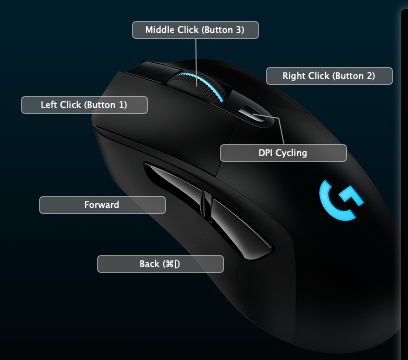I’ve had a few days to acclimate to working with a Mac for an extended period of time. I normally use my MacBook Pro for an hour or so at most and haven’t spent a lot of time tweaking with its settings like I would a desktop computer. Now that I have a Mac mini, which indeed sits on my desktop, I’ve been diving into settings to make it work the way I want it to. The experience has been…interesting.
Today I am going to talk about one thing: mouse support.
Mouse support in macOS is bad. It’s like a lot of Apple’s mice in that regard. Bad hardware, meet bad software!
Here are some of the bad things:
- No “snap to default button in dialogs” like in Windows
- No automatic support for third or fourth mouse buttons
- Even with some settings maxed out, the mouse still feels a bit sluggish compared to how it operates in Windows
While the first and third items on the list are either subjective or more “nice to have” features, supporting the side buttons on a mouse is pretty fundamental. It’s not 1985 anymore. Mice have more than one button.
I was not actually aware of this because most of my Mac experience has been using a keyboard or a trackpad. When I plugged in my wireless Logitech G703 mouse, it was instantly recognized and worked without any fuss. Yay. But then I discovered the two side buttons would not work. Or rather, they worked in weird ways. In Firefox, pressing Button 3 (the one normally assigned as Back) would result in the same action as pressing the middle mouse button, which is to produce a weird little circular symbol on screen that lets you scroll up and down by moving the mouse. It’s a feature that I’m pretty sure no one ever has ever used on purpose after scroll wheels became a thing.
A mini mouse crisis was now underway.
The Logitech Gaming Software (LGS) showed the buttons correctly mapped as Forward and Back, but the Mac remained unconvinced. I began to investigate using my well-honed Google skills. This led me to try third party tools like BetterTouchTool, which did indeed allow me to map the buttons the way I wanted–nay, the way nature intended! But I didn’t really want to use a separate program just to get the buttons to function the way they would in any sensible operating system. I poked around some more and found that Command-[ is a near-universal key command for Back.
I went into the LGS and assigned Button 3 to Command-[. After doing this the LGS software now showed the button labelled with the keyboard shortcut as seen below.

And at least for now, using the Back button on the mouse does just that–it goes back. It’s even working in Finder, which kind of surprises me.
Searching, testing and playing around with settings for this consumed a decent chunk of the evening. For something that works without any configuration needed at all in Windows. I’m not saying Windows is better. But in this case, Windows is way better.
Perhaps mouse support will be improved in macOS XI.

